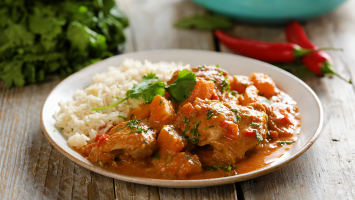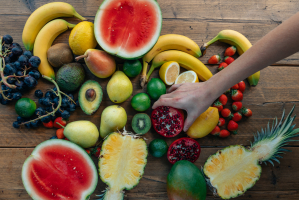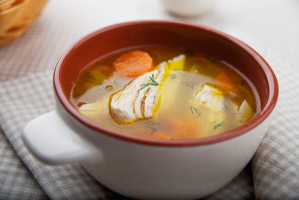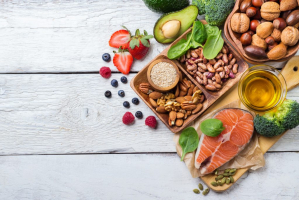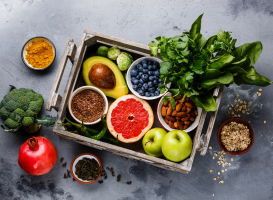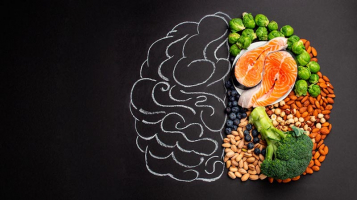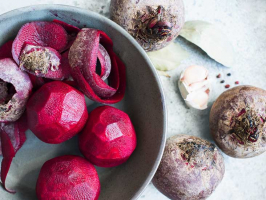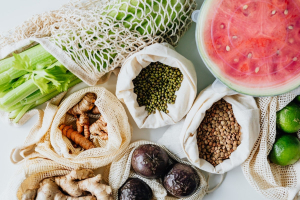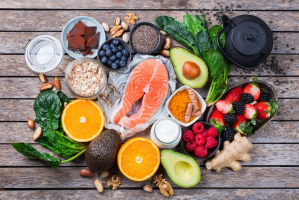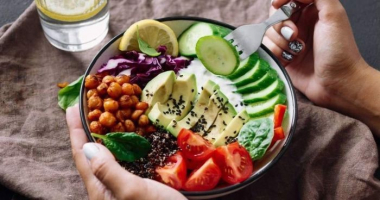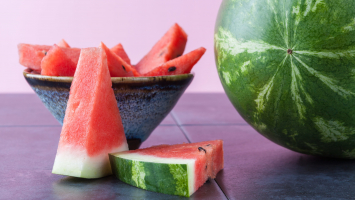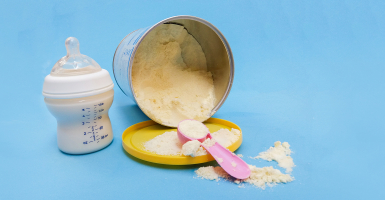Top 15 Best Foods to Relieve Constipation
Around 14% of people suffer from chronic constipation at some time in their lives. Constipation can be caused by a number of factors, but one of the most ... read more...common is the slow transit of food through the digestive system. This might be caused by dehydration, a bad diet, medications, sickness, nervous system problems, or mental issues. Fortunately, certain foods can help treat constipation by adding volume, shortening the time it takes for food to pass through the digestive system, and increasing stool frequency. Here are some foods that might help you stay regular and relieve constipation.
-
Prunes are dried plums that are commonly used as a natural cure for constipation. They have significant fiber content, with roughly 3 grams every 1/4-cup (40-gram) portion. This amounts to 12% of the American Heart Association's recommended daily fiber intake (RDI).
Prunes include cellulose, an insoluble fiber that increases the quantity of water in the stool, which can add bulk. Meanwhile, the soluble fiber in prunes is fermented in the colon, resulting in the production of short-chain fatty acids, which might lead to an increase in stool weight. Prunes also contain phenolic chemicals that promote the growth of good bacteria in the stomach. It's thought that this contributes to their laxative effect. In previous research of 40 persons with chronic constipation, consuming 3.5 ounces (100 grams) of prunes per day increased stool frequency and consistency considerably when compared to psyllium, a type of dietary fiber. Prunes can be consumed plain or added to salads, cereals, oatmeal, baked goods, smoothies, and savory stews.
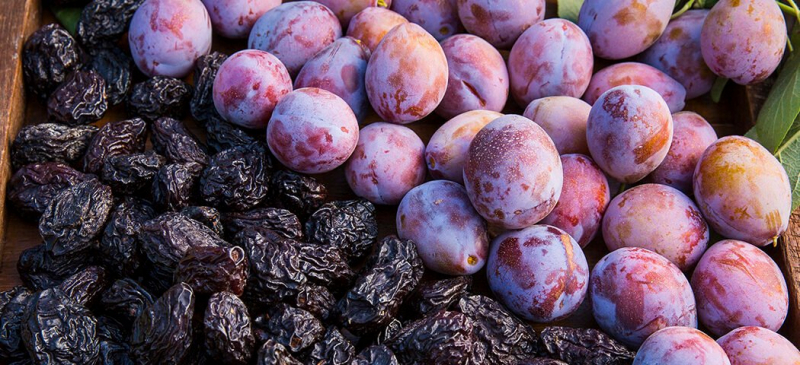
Prunes 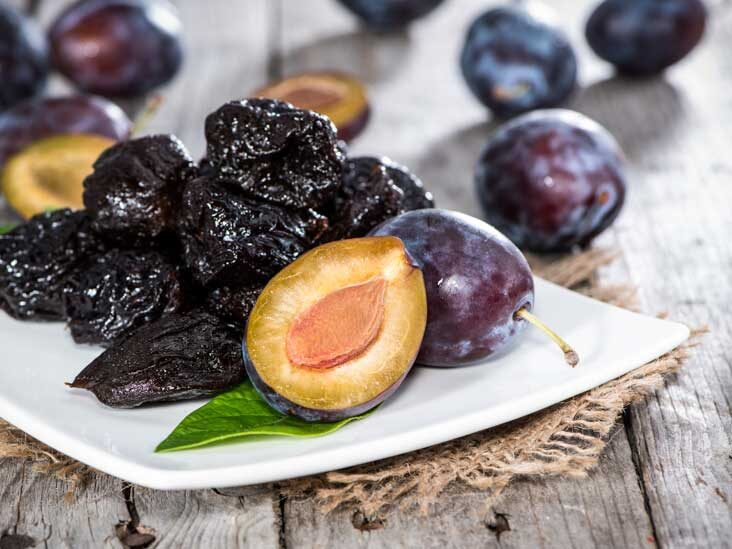
Prunes -
Apples are a good source of fiber. In reality, one medium apple with the skin on (about 200 grams) has 4.8 grams of fiber or 19% of the recommended daily intake.
Apples include soluble fiber, which is largely in the form of a dietary fiber called pectin, even though the majority of that fiber is insoluble. Pectin is rapidly digested by bacteria in the gut, resulting in short-chain fatty acids that can pull water into the colon, softening the stool and reducing gut transit time. Pectin accelerated stool movement through the intestines, alleviated constipation symptoms, and increased the number of good bacteria in the stomach, according to a study of 80 persons with constipation. Despite being given morphine, which promotes constipation, rats on an apple fiber diet had increased stool frequency and weight, according to older animal research. Apples are a simple method to increase your fiber intake and relieve constipation. You may eat them whole or slice them up and use them in salads or baked goods. The fiber level of Granny Smith apples is very high.
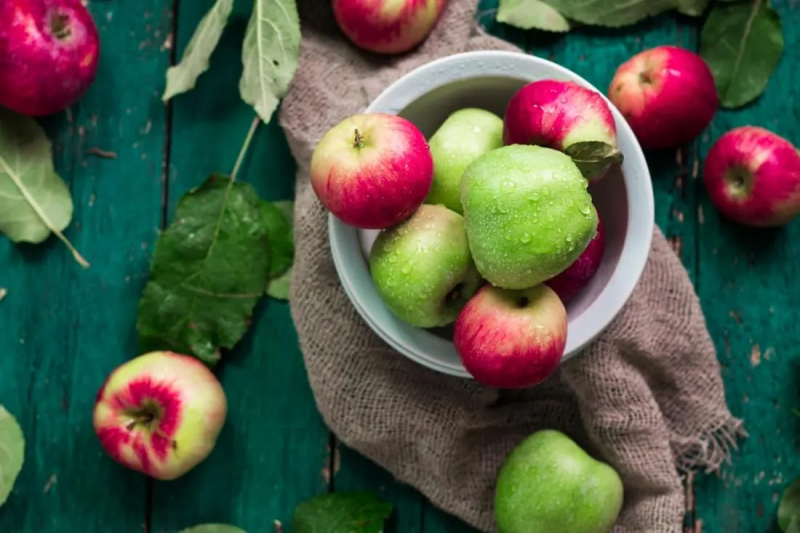
Apples 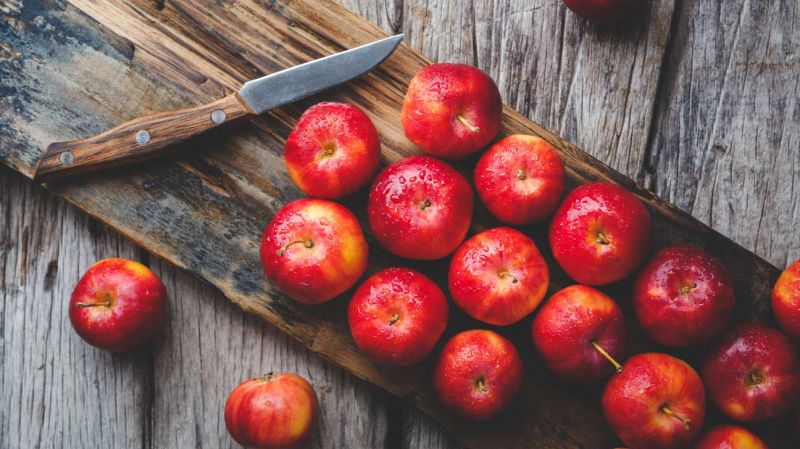
Apples -
Pears are another high-fiber fruit, with roughly 5.5 grams of fiber per medium-sized fruit (about 178 grams). This amounts to 22% of the RDI for fiber.
Pears are particularly high in fructose and sorbitol when compared to other fruits, in addition to the fiber benefits. Fructose is a sugar that some people have trouble absorbing. This implies that part of it makes its way to the colon, where it draws water through osmosis, causing a bowel movement. Sorbitol, sugar alcohol present in pears, is also found. Sorbitol, like fructose, is poorly absorbed by the body and functions as a natural laxative by causing the intestines to fill with water. Pears may be added to your diet in a variety of ways. They can be eaten raw or cooked, with cheese, or added to salads, savory dishes, and baked goods.
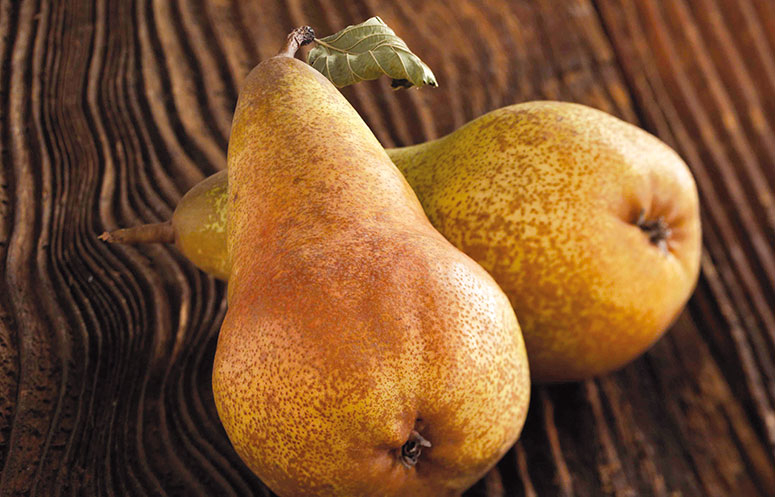
Pears 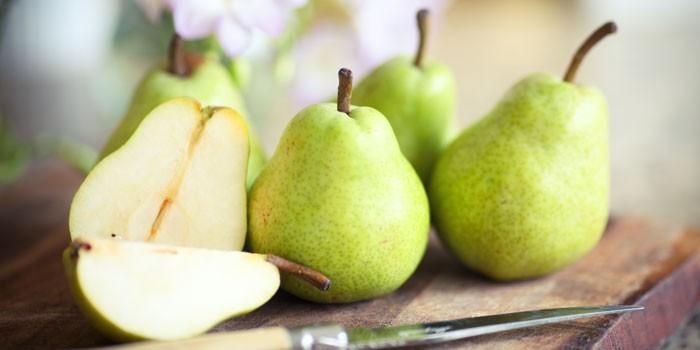
Pears -
One kiwi (about 75 grams) includes around 2.3 grams of fiber, which is about 9% of the recommended daily intake. A kiwi-derived supplement was eaten for 28 days by 19 healthy people in one research. When compared to a control group, researchers discovered that doing this led to significant increases in the number of daily bowel movements.
In another study, 11 healthy people who ate two kiwis every day for two weeks had more bowel movements and looser stools. In addition, 54 persons with irritable bowel syndrome were given two kiwis each day for four weeks in a 2010 trial. The fiber in kiwis isn't the only thing that is supposed to help with constipation. Actinidin, an enzyme, is also thought to be responsible for kiwi's positive effects on gut motility and bowel habits. Raw kiwis are delicious. Scoop off the green flesh and seeds after peeling or cutting them in half. They're a great addition to fruit salads and may be used to improve the fiber content of smoothies.
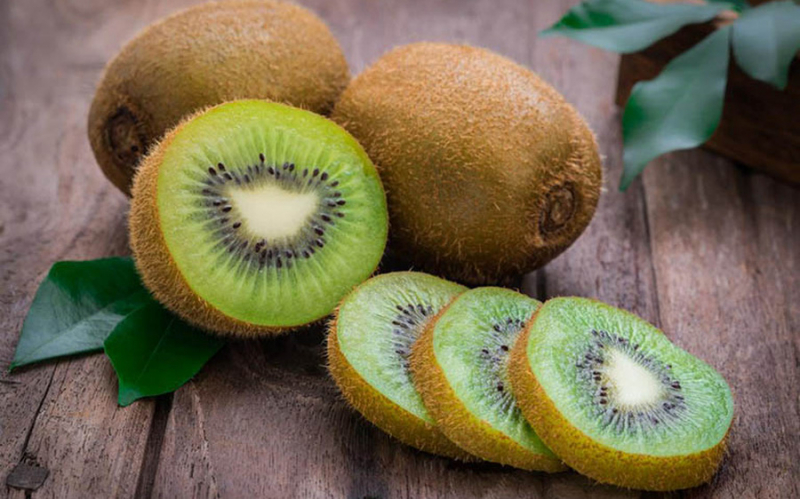
Kiwis 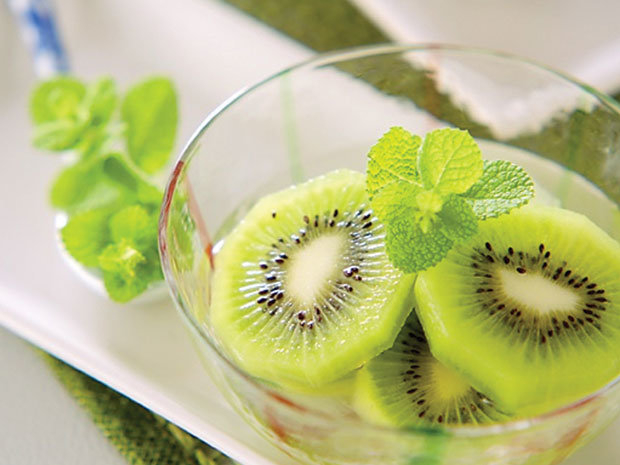
Kiwis -
Figs are an excellent source of fiber and can help you maintain good bowel movements. 1.5 grams of fiber are found in one medium raw fig (approximately 50 grams). Furthermore, half a cup (80 grams) of dried figs includes 7.9 grams of fiber, which is about 32% of the recommended daily intake.
Over the course of three weeks, older research in dogs looked at the benefits of fig paste on constipation. The researchers discovered that fig paste increased stool weight while decreasing intestinal transit time. Another research indicated that eating 10.6 ounces (300 grams) of fig paste per day for 16 weeks helped speed colonic transit, improve stool consistency, and relieve stomach discomfort in 40 persons with constipation. Figs contain an enzyme called ficin, which is similar to actinidin, which is found in kiwis. This, together with its high fiber content, is considered to contribute to its positive effects on digestive function. Figs are a tasty snack on their own, but they also go well with sweet and savory dishes. They go well with cheese and gamey meats, as well as pizza, baked goods, and salads, and maybe eaten raw, cooked, or dried.
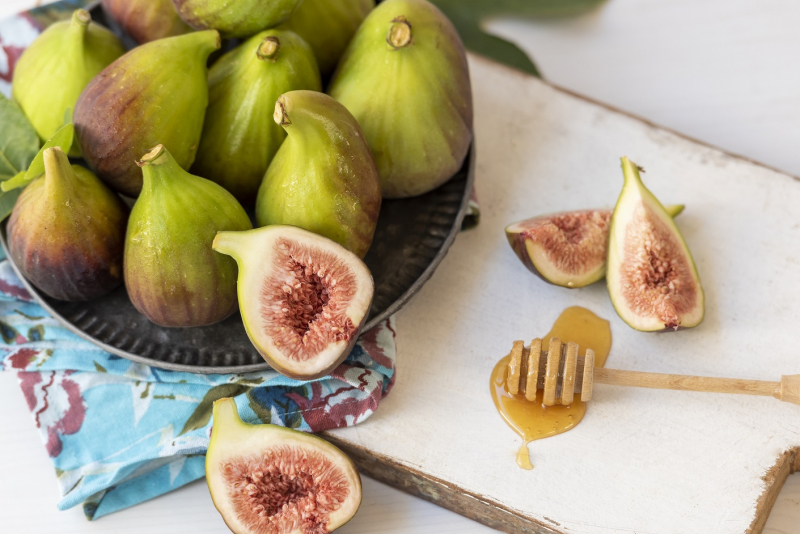
Figs 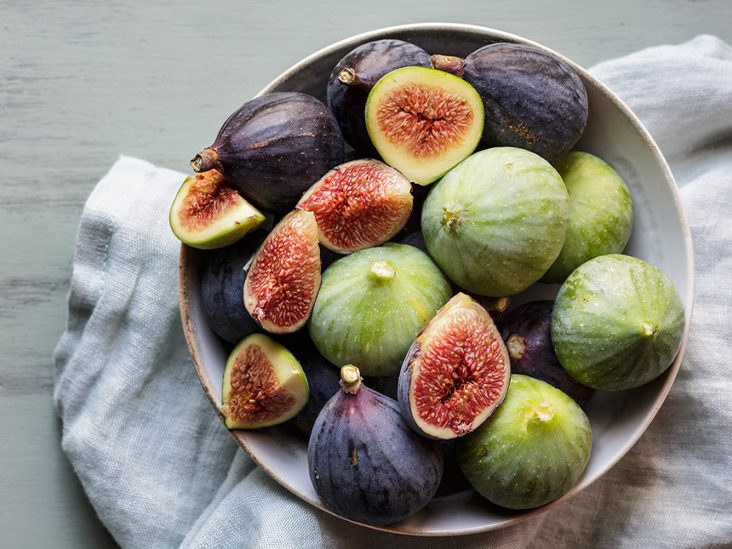
Figs -
Oranges, grapefruits, and mandarins are all rich sources of fiber and a refreshing snack. One orange (about 154 grams) has 3.7 grams of fiber, which is 15% of the RDI. Meanwhile, one grapefruit (approximately 308 grams) has over 5 grams of fiber, which is enough to satisfy 20% of your daily fiber requirements.
Citrus fruits, particularly their peels, are high in the soluble fiber pectin. Pectin can help to speed up colonic transit and relieve constipation. Citrus fruits also contain a flavanol called naringenin, which may contribute to their anti-constipation effects. Naringenin has been found in animal tests to stimulate fluid secretion into the colon, resulting in a laxative effect. However, the further human study is required. Citrus fruits should be eaten raw to receive the most fiber and vitamin C. Oranges and mandarins make great snacks, while grapefruit goes well in salads or as a breakfast sliced in half.
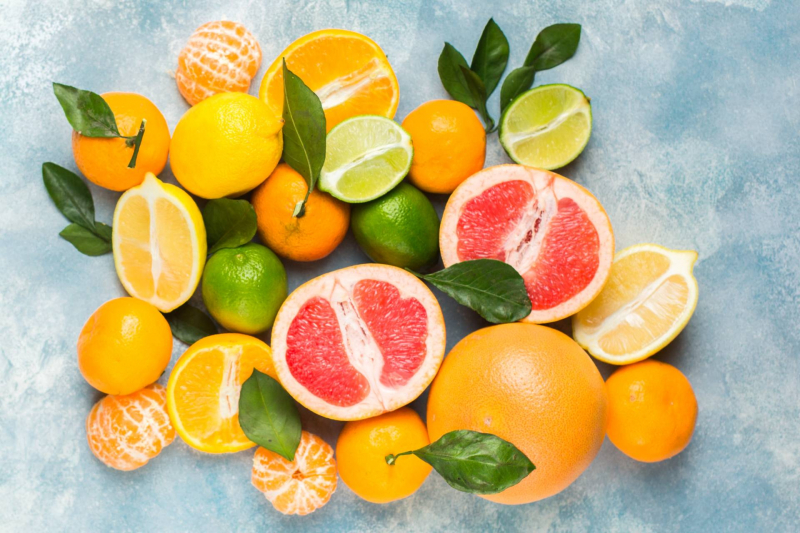
Citrus fruits 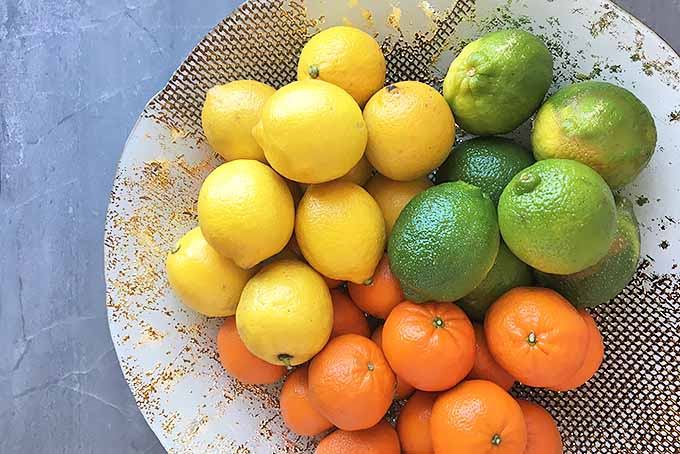
Citrus fruits -
Greens such as spinach, Brussels sprouts, and broccoli are high in fiber as well as folate, vitamin C, and vitamin K. These greens help to bulk and weight stools, making them easier to move through the digestive tract. Cooked spinach has 4.7 grams of fiber per cup (180 grams), which is 19% of the RDI.
To add spinach to your diet, make a quiche, pie, or soup. For a fiber boost, raw baby spinach or tender greens can be added to salads or sandwiches. Brussels sprouts are also extremely nutritious, having 14% of your daily fiber requirements and just 41 calories in just 5 sprouts. They can be served hot or cold after being boiled, steamed, grilled, or roasted. Broccoli, on the other hand, has 2.4 grams of fiber per cup (91 grams). This is 10% of the recommended daily intake of fiber. It may be eaten fresh in salads or as a snack, as well as cooked and added to soups and stews.
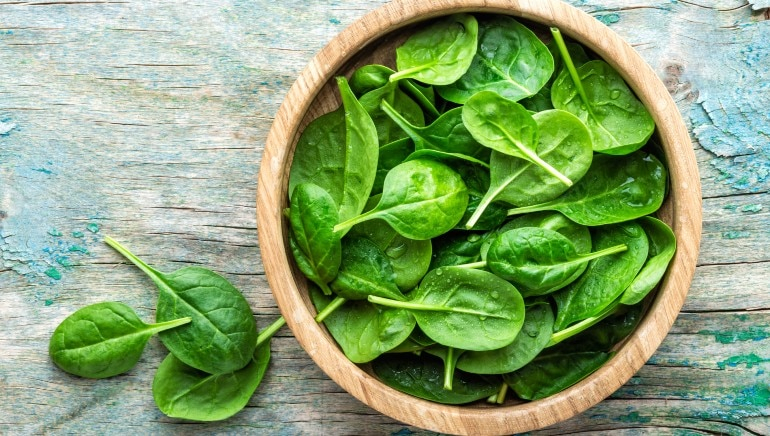
Spinach and other greens 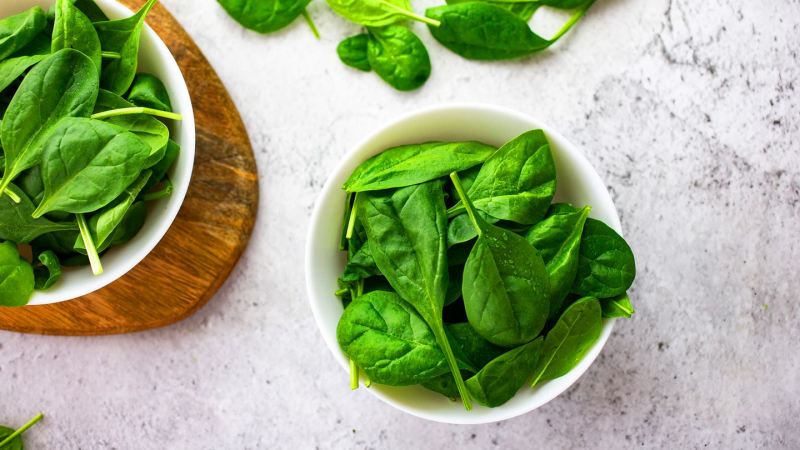
Spinach and other greens -
Chicory and Jerusalem artichoke are both members of the sunflower family and are high in inulin, a form of soluble fiber. Inulin is prebiotic, which means it promotes digestive health by stimulating the development of microorganisms in the stomach. It's especially helpful for Bifidobacteria.
Inulin increases stool frequency, improves consistency, and reduces gut transit time, according to a review of research on inulin and constipation. It also has a mild bulking effect on the stools by increasing bacterial mass. Taking 0.4 ounces (12 grams) of inulin from chicory every day enhanced stool frequency and softness in 44 healthy persons with constipation, according to recent research. Tubers with a nutty flavor, Jerusalem artichokes are a kind of Jerusalem artichoke. They are sold in most supermarkets under the names sunchokes and topinambur. Roasted, steamed, boiling or mashed potatoes are all options. Chicory root is not widely available in stores, but it has become a popular coffee alternative in its ground form.
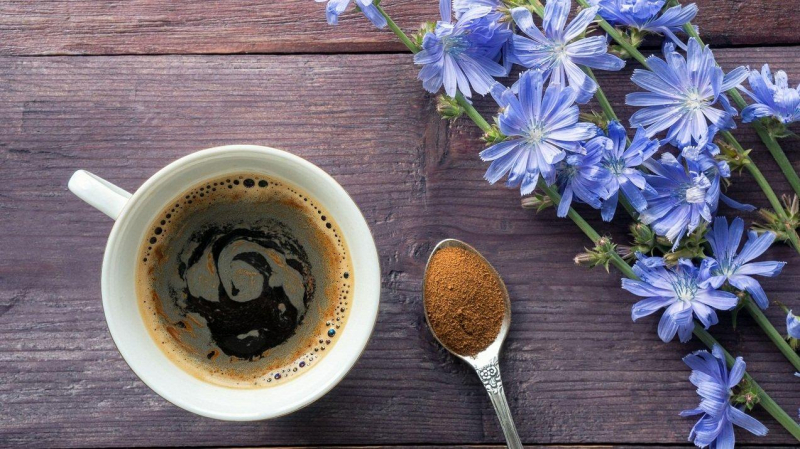
Chicory coffee 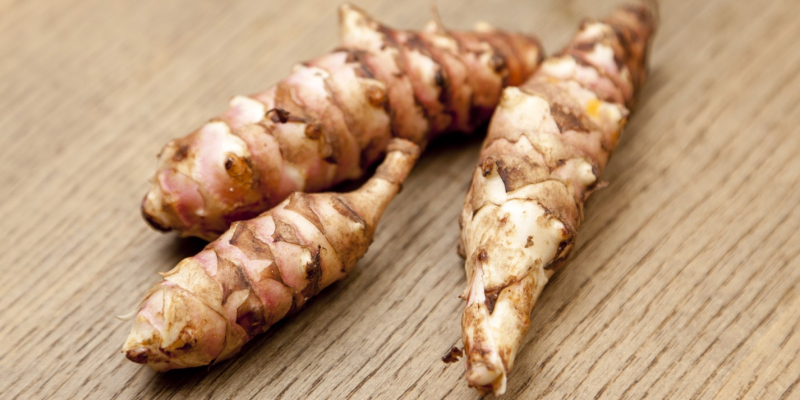
Jerusalem artichoke -
Artichokes have a prebiotic impact, which promotes digestive health and regularity, according to scientific evidence. Prebiotics, such as inulin, are indigestible carbohydrates that feed the good bacteria in your gut, increasing their numbers and preventing the formation of bad bacteria.
People who ate 10 grams of fiber extracted from artichokes every day for three weeks had higher quantities of good Bifidobacteria and Lactobacilli bacteria, according to an older study. It was also shown that harmful bacteria levels in the intestines had reduced. Prebiotics has also been shown to enhance stool consistency and frequency in those who suffer from constipation. Artichokes that have been cooked can be eaten hot or cold. The outer petals can be removed and the puppy center consumed with a sauce or dip. The artichoke's heart may be taken out and chopped into small pieces.
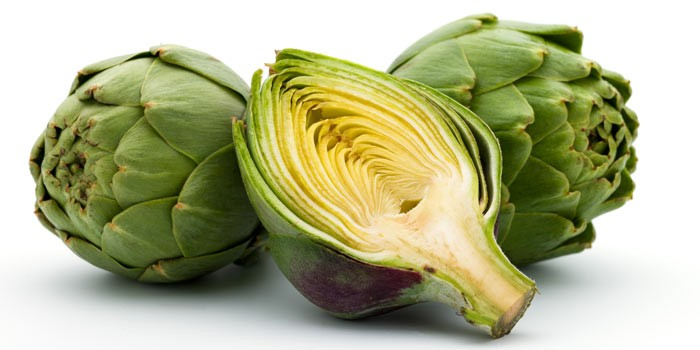
Artichoke 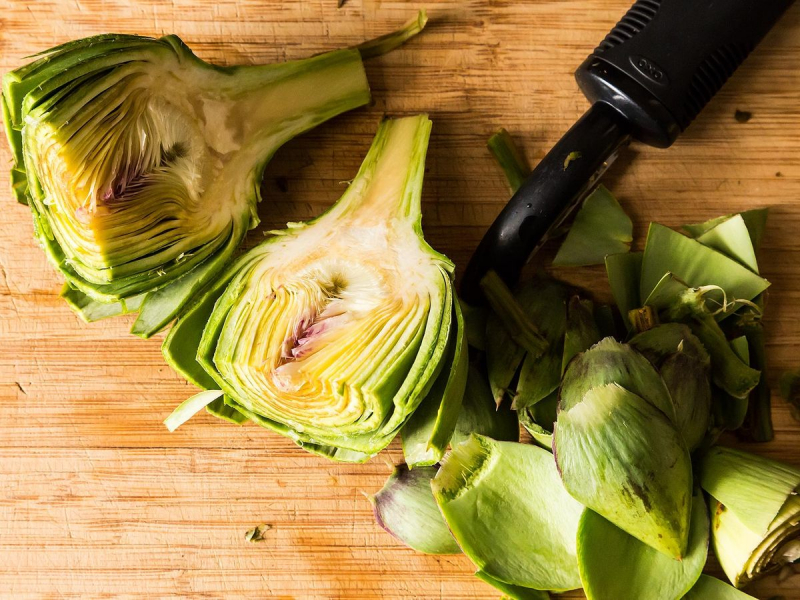
Artichoke -
Rhubarb is a leafy plant with bowel-stimulating effects. It includes the chemical sennoside A, often known as Senna, which is a popular herbal laxative.
Sennoside A from rhubarb works by lowering the levels of aquaporin 3, a protein that regulates the movement of water in the intestines, according to rat research. Less water is moved from the colon back into the circulation when aquaporin 3 levels are low, making stools softer and increasing bowel motions. In addition, 1 cup (122 grams) of rhubarb includes 2.2 grams of dietary fiber, which accounts for 9% of the recommended daily intake of fiber. The rhubarb plant's leaves are poisonous, but the stalks can be chopped and cooked. Rhubarb is a tart vegetable that is frequently sweetened and used in pies, tarts, and crumbles. For a fiber-rich breakfast, mix it together with oats or muesli.
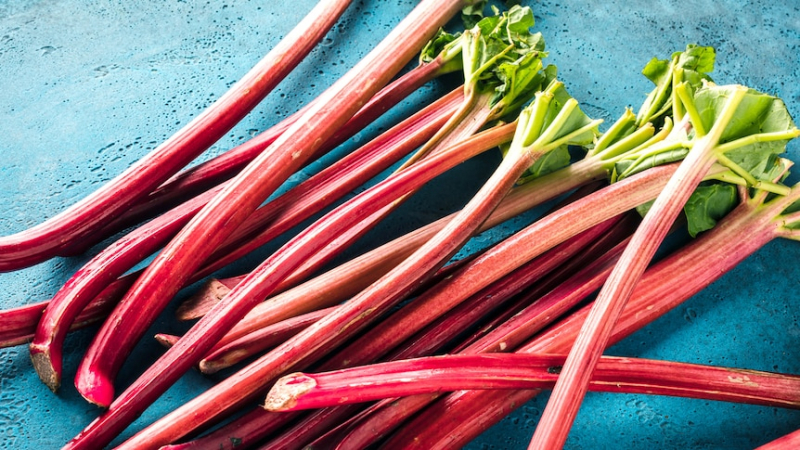
Rhubarb 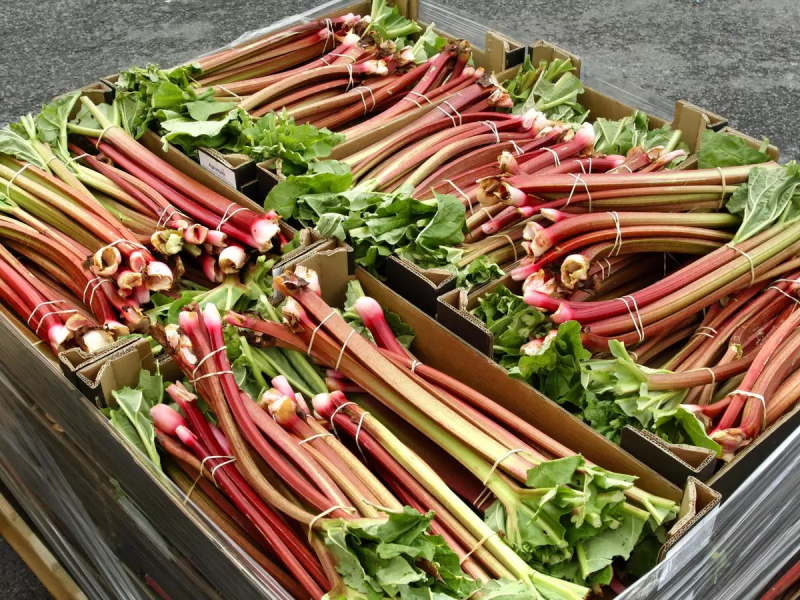
Rhubarb -
Sweet potatoes are high in fiber, which can assist with constipation. One medium sweet potato (about 150 grams) has 3.6 grams of fiber or 14% of the recommended daily intake. Sweet potatoes are high in cellulose and lignin, which are both insoluble fibers. They also contain pectin, a soluble fiber.
By adding bulk and weight to stools, insoluble fiber can help with bowel motions. One research looked at how sweet potatoes affected patients who were receiving chemotherapy, which can produce constipation. In comparison to the control group, individuals experienced reduced constipation symptoms and reported less straining and discomfort after just four days of consuming 7 ounces (200 grams) of sweet potato per day. Roasted, steamed, boiling or mashed sweet potatoes are all options. It may also be substituted for regular potatoes in any recipe that calls for them.
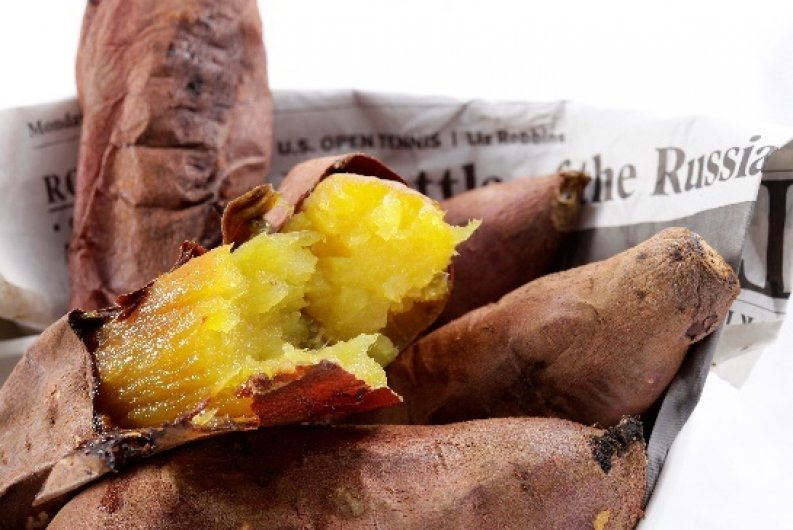
Sweet potato 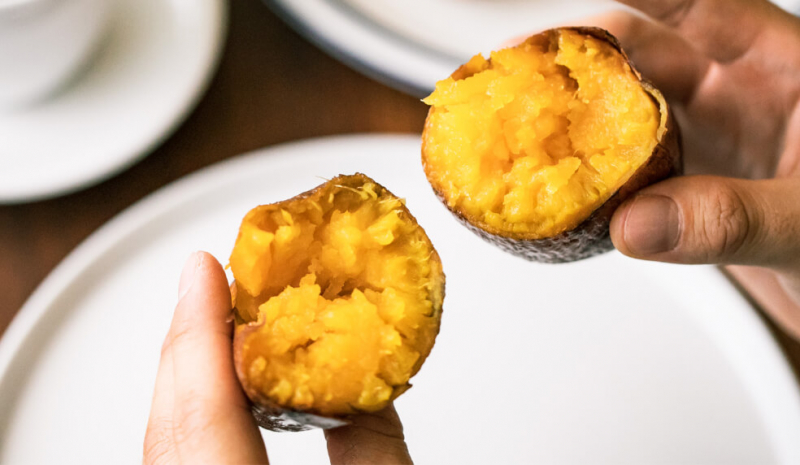
Sweet potato -
Pulses, which include beans, peas, and lentils, are one of the cheapest and most fiber-rich food groups you can eat. They can be considered a protein food or as part of the vegetable group.
For example, 1 cup (182 grams) of cooked navy beans (the variety used for baked beans) has 19.1 grams of fiber or 76% of the RDI. Furthermore, one-half cup (99 grams) of cooked lentils has 7.8 grams of fiber, which is enough to satisfy 31% of your daily fiber requirements. Pulses have a combination of soluble and insoluble fiber. This implies they can help with constipation by giving stools more bulk and weight, as well as softening them to make passage easier. Add pulses to soups, blend them to make healthy dips, put them in salads, or add them to ground-meat meals for added bulk and flavor.
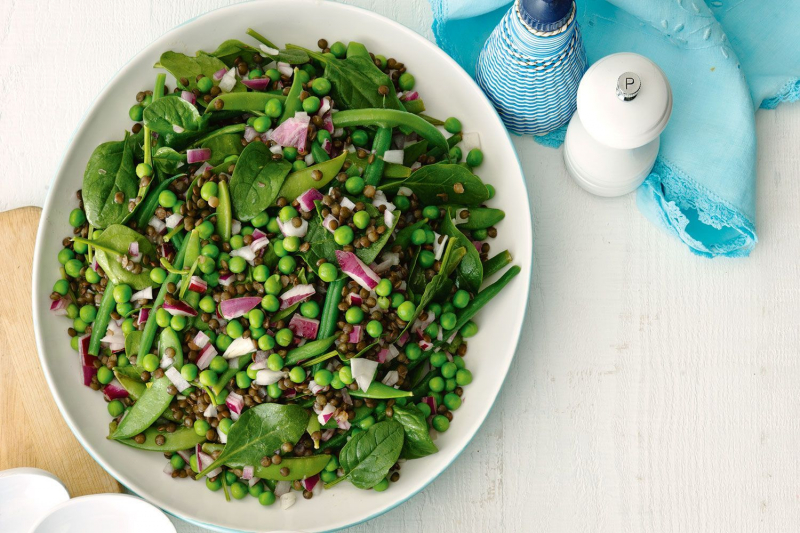
Bean, pea and lentil salad 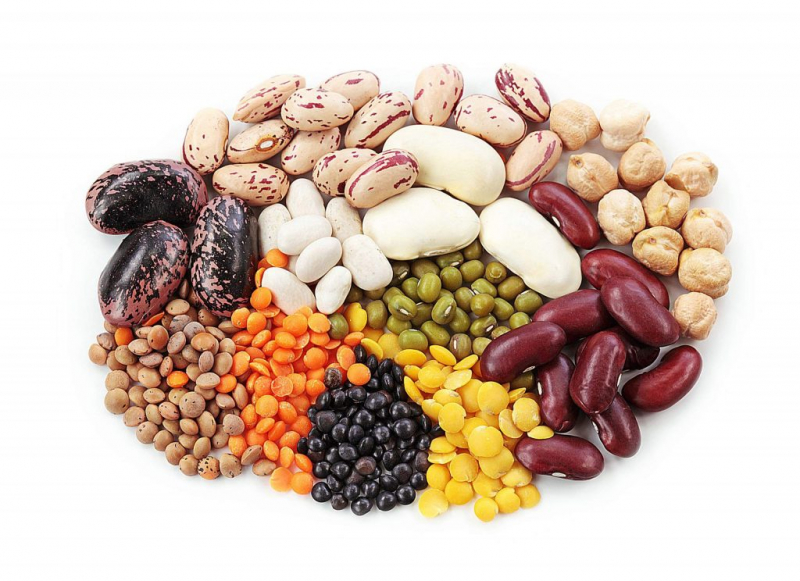
Beans, peas, and lentils -
Chia seeds are one of the most high-fiber foods on the market. Chia seeds provide 9.8 grams of fiber per ounce (28 grams), which is enough to satisfy 39% of your daily fiber needs. Chia fiber is made up of 85% insoluble fiber and 15% soluble fiber.
Chia forms a gel when it comes into touch with water. This can soften stools and make them simpler to pass in the gut. Furthermore, chia may absorb up to 12 times its own weight in water, which can help stools bulk up and become heavier. Chia seeds are extremely adaptable and may be used in a variety of dishes to significantly increase fiber content without any effort. Sprinkled on cereal, oats, or yogurt, they're delicious. You may also mix them into dips, salad dressings, baked goods, and sweets, or add them to a smoothie or veggie juice.
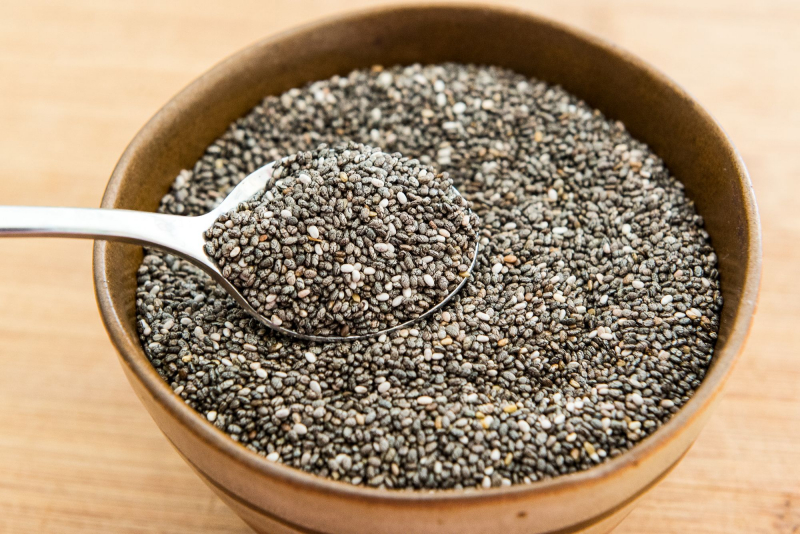
Chia seeds 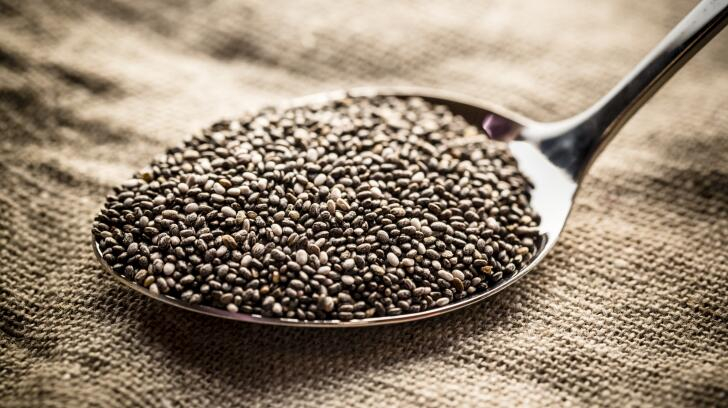
Chia seeds -
Because of their natural laxative qualities, flaxseeds have been used as a traditional cure for constipation for ages. Flaxseeds are high in both soluble and insoluble dietary fiber, making them an excellent digestive aid in addition to their many other health benefits.
One tablespoon (9 grams) of whole flaxseeds has 2.5 grams of fiber, which is enough to fulfill 10% of your daily fiber requirements. In a 2012 research, mice fed a flaxseed-supplemented diet had a shorter small intestine transit time and more weight and frequency in their stools. Insoluble fiber, according to the researchers, acts like a sponge in the large intestine, holding water, adding volume, and softening the stool. Meanwhile, the soluble fiber encourages bacterial development while also bulking up stools. Flaxseed may be eaten in cereals and yogurt, as well as baked into muffins, bread, and cake.
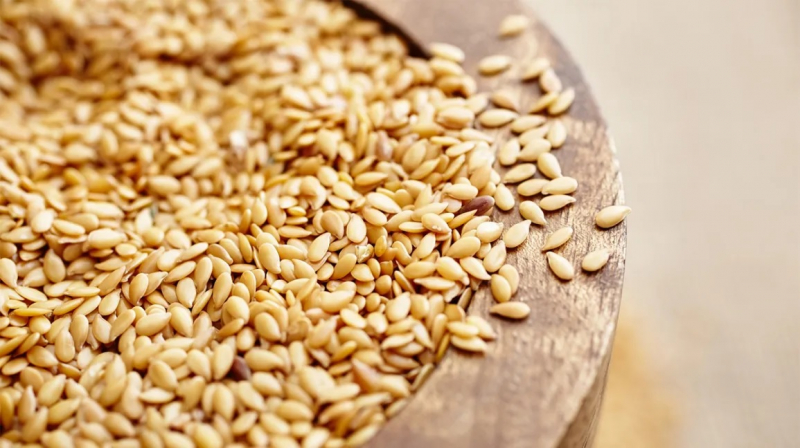
Flaxseeds 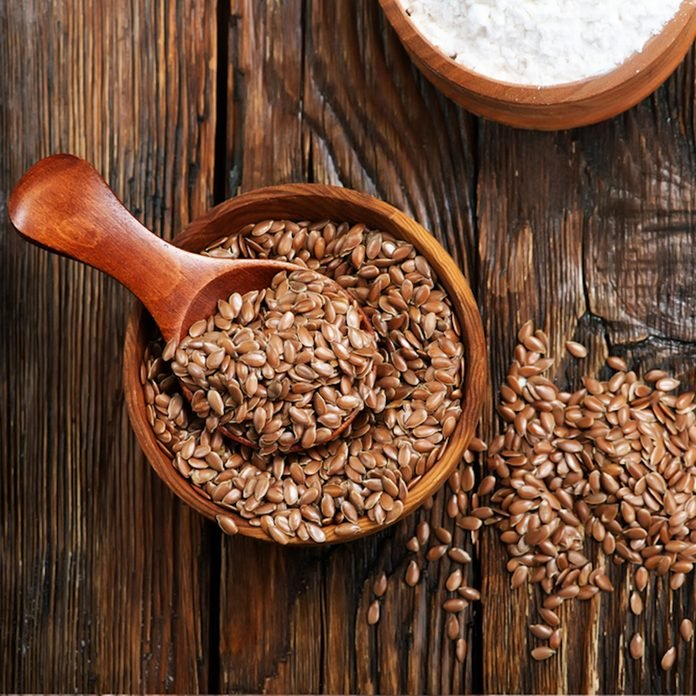
Flaxseeds -
Rye bread is a typical European bread that is high in nutritional fiber. Two slices of whole-grain rye bread (approximately 64 grams) provide 3.7 grams of dietary fiber, which is 15% of the RDI.
Regular white wheat bread can be replaced with rye bread. It has a stronger flavor and is generally thicker and darker than regular bread. According to studies, rye bread is more effective than regular wheat bread or laxatives in treating constipation. The effects of consuming 8.5 ounces (240 grams) of rye bread per day on 51 persons with constipation were investigated in a 2010 research. Intestinal transit durations were reduced by 23% on average in those who ate rye bread compared to those who ate wheat bread. Softened stools, as well as increased frequency and ease of bowel motions, were also observed.
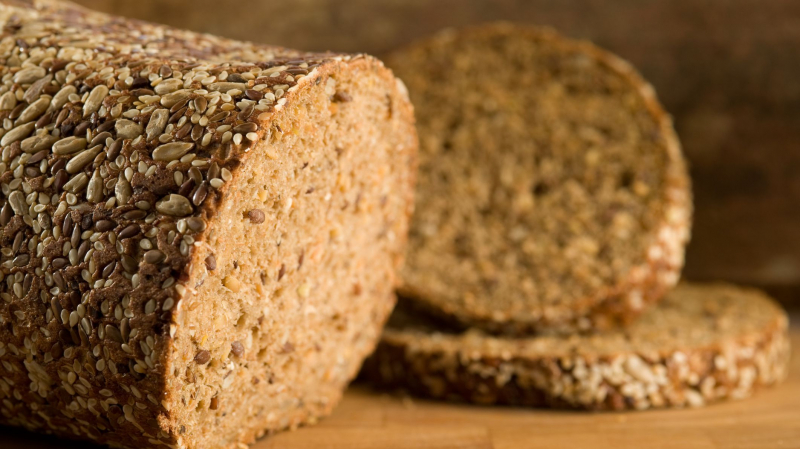
Whole grain rye bread 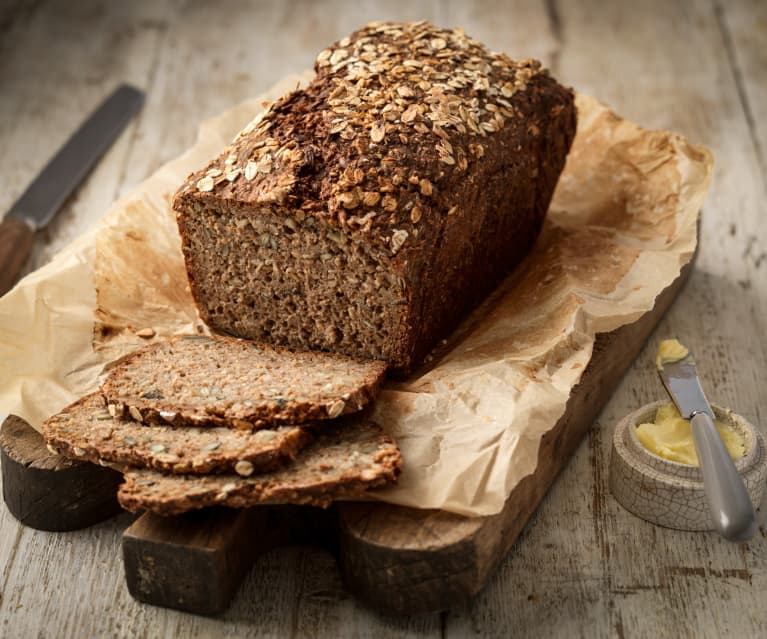
Whole grain rye bread

















